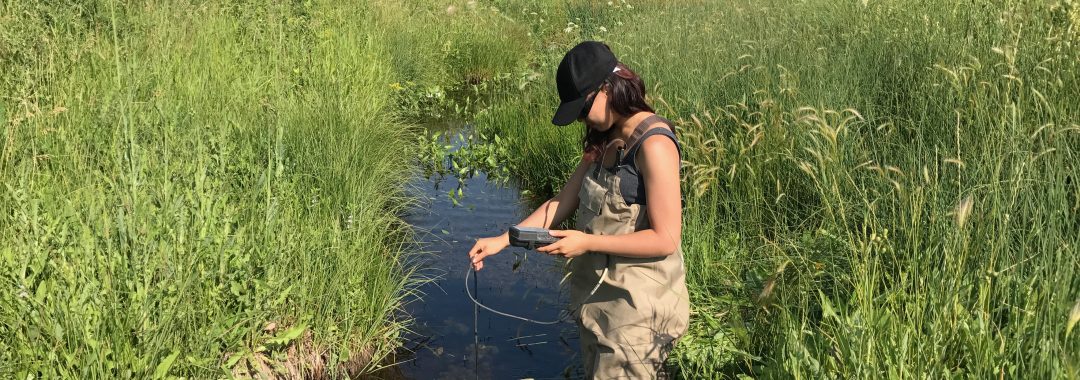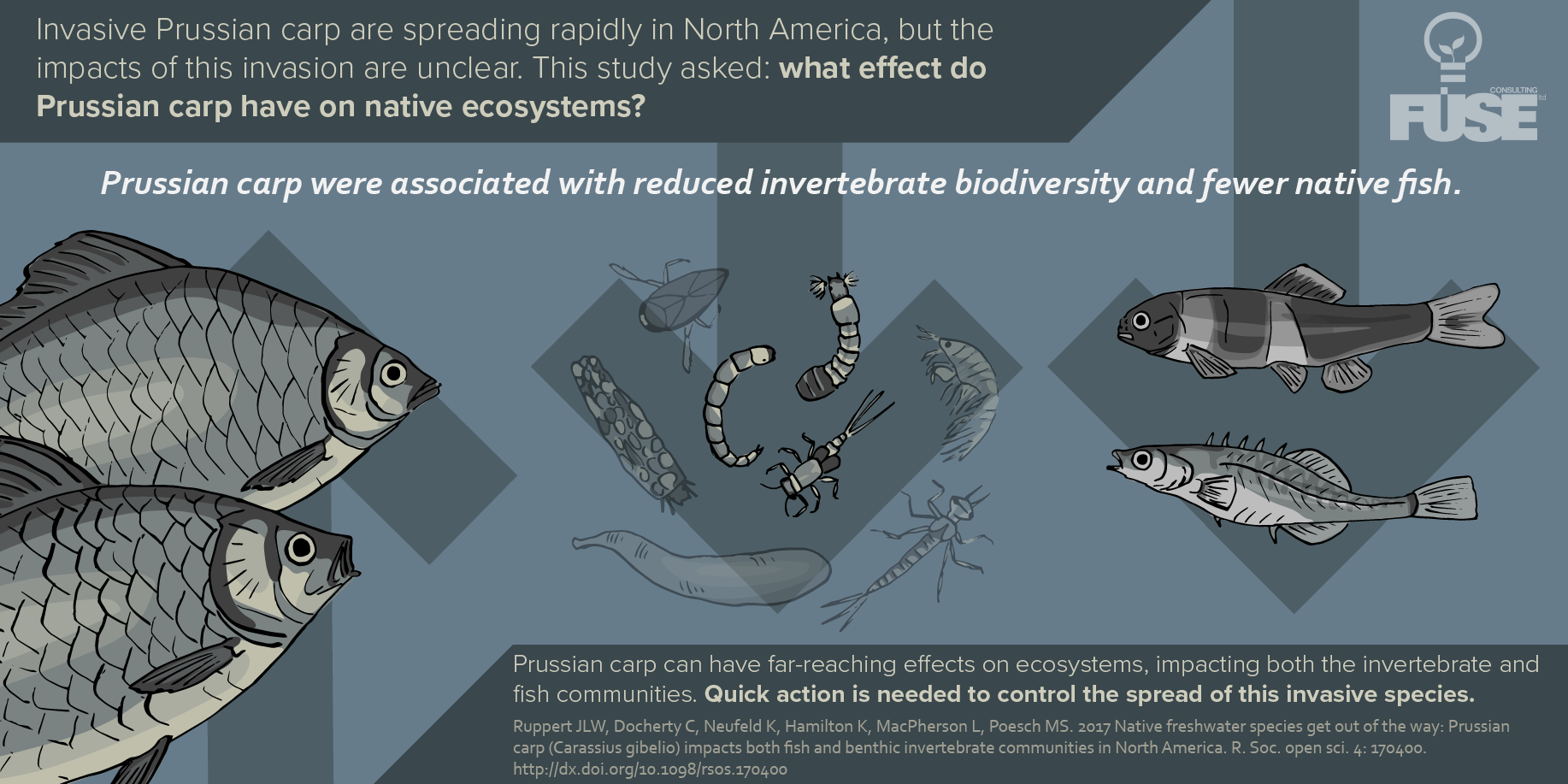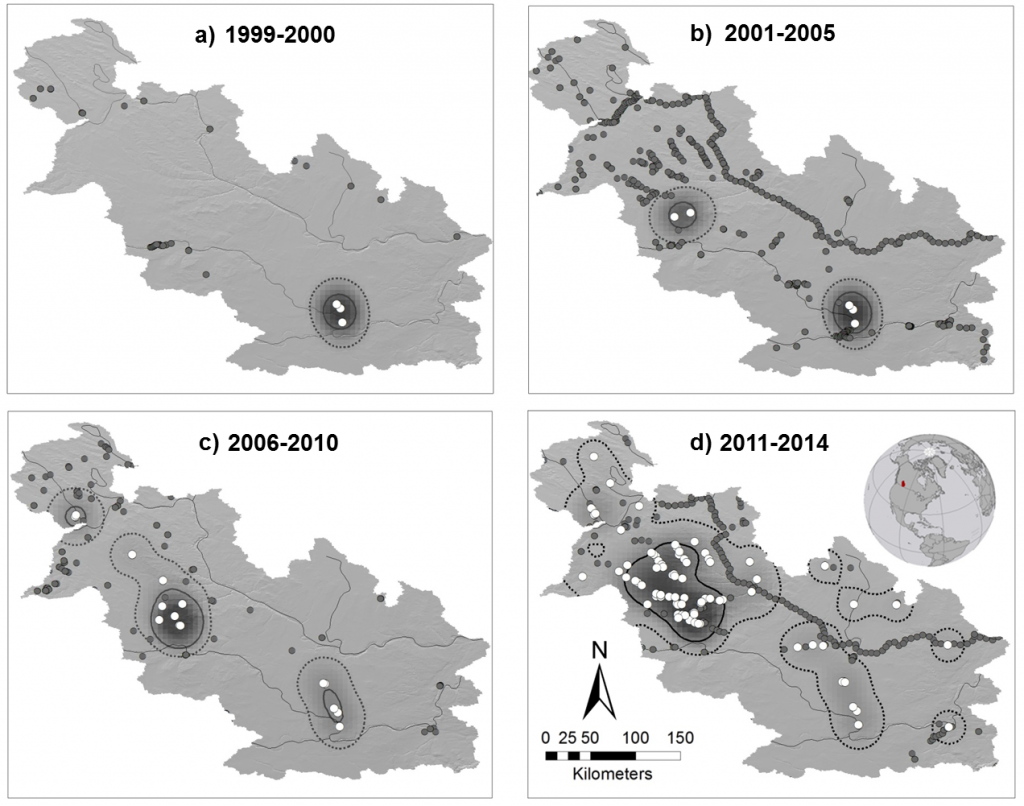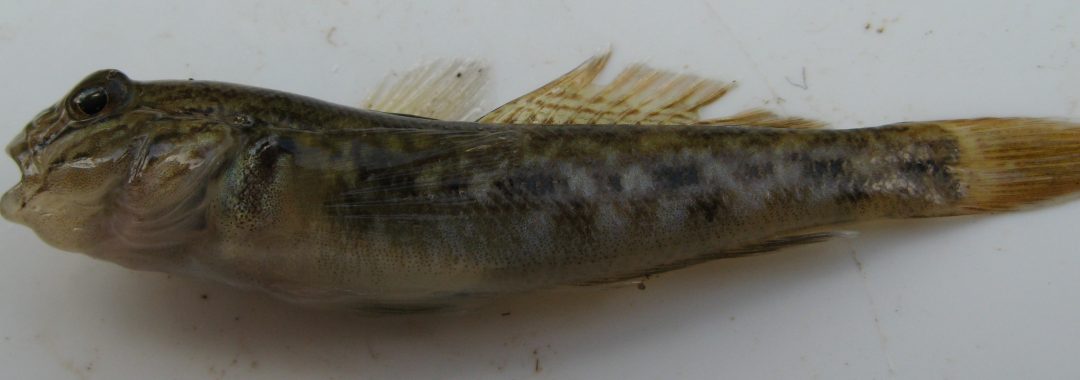Abstract:
Management of invasive species and pathogens requires information about the traffic of potential vectors. Such information is often taken from vector traffic models fitted to survey data. Here, user-specific data collected via mobile apps offer new opportunities to obtain more accurate estimates and to analyze how vectors’ individual preferences affect propagule flows. However, data voluntarily reported via apps may lack some trip records, adding a significant layer of uncertainty. We show how the benefits of app-based data can be exploited despite this drawback. Based on data collected via an angler app, we built a stochastic model for angler traffic in the Canadian province Alberta. There, anglers facilitate the spread of whirling disease, a parasite-induced fish disease. The model is temporally and spatially explicit and accounts for individual preferences and repeating behaviour of anglers, helping to address the problem of missing trip records. We obtained estimates of angler traffic between all subbasins in Alberta. The model’s accuracy exceeds that of direct empirical estimates even when fewer data were used to fit the model. The results indicate that anglers’ local preferences and their tendency to revisit previous destinations reduce the number of long inter-waterbody trips potentially dispersing whirling disease. According to our model, anglers revisit their previous destination in 64% of their trips, making these trips irrelevant for the spread of whirling disease. Furthermore, 54% of fishing trips end in individual-specific spatially contained areas with mean radius of 54.7km. Finally, although the fraction of trips that anglers report was unknown, we were able to estimate the total yearly number of fishing trips in Alberta, matching an independent empirical estimate.
Citation: Fischer, S.M., Ramaza, P., Simmons, S., Poesch, M.S. and M.A. Lewis. (2023) Boosting propagule transport models with individual-specific data from mobile apps. Journal of Applied Ecology 60(5): 934-949.
Also Read:
*Lab members: Samuel Fischer. Check out opportunities in the lab!











